DISCOVER KAMIKOCHI IN THE JAPANESE ALPS [FULL GUIDE]
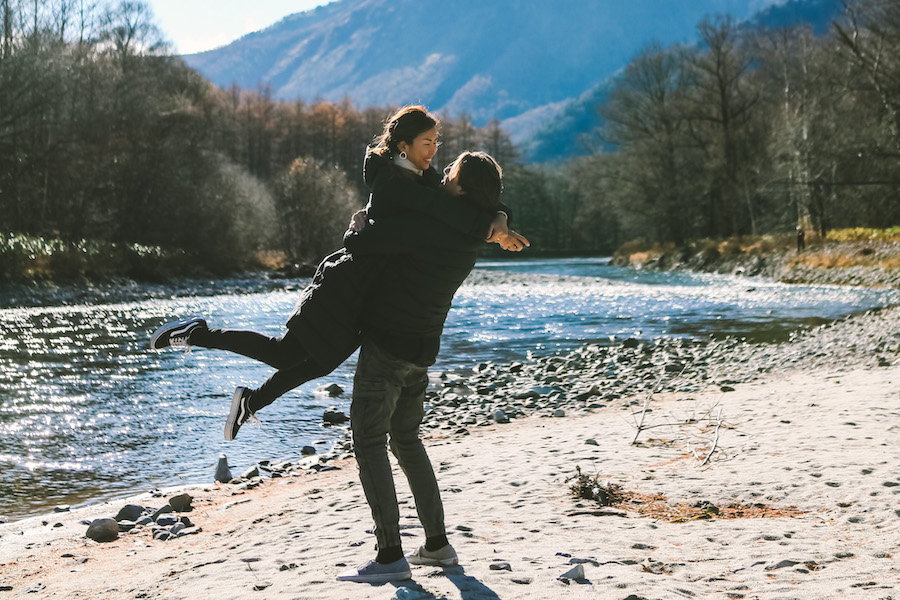
WHAT TO SEE IN KAMIKOCHI? HOW TO GET TO KAMIKOCHI? IS KAMIKOCHI WORTH VISITING?
Kamikochi is a 15-kilometer forest valley located along the Azusa River in the heart of the Japanese Alps in Nagano Prefecture.
The site offers a delightful walk that can be done in one day, embellished with magnificent landscapes in spring and autumn. Kamikochi is classified as a Natural Heritage of Japan.
Key Takeaways from a visit to Kamikochi:
– Stunning Natural Scenery: Kamikochi is renowned for its breathtaking landscapes, including pristine rivers, dramatic mountain peaks, and lush forests, ideal for photography and nature enthusiasts.
– Japanese Alps: The Kamikochi is 1,400 to 1,600 meters above sea level, with peaks reaching over 3,000 meters for the surrounding massifs.
– Plan at least 1 day to fully appreciate the Kamikochi valley, often described as the most beautiful view of Japan from the famous Kappa Bridge.
After our visit of Matsumoto, the legendary Nakasenday Way, Takayama, Shirakawa-go, our next stop brings us to Kamikochi deep in the Japanese Alps. Our visit to Kamikochi was one of the highlights of our road trip through Japan. It is stunning.
Here is a full guide to help you prepare for your visit to Kamikochi in Japan!
Here is a Sneak Peek into Kamikochi:
WHAT TO SEE IN KAMIKOCHI?
1. Kappa Bridge, the most scenic viewpoint in Japan

The Kappa Bridge is THE unmissable thing to see in Kamikochi! The view of the bridge with the snowy mountain in the background is just stunning!
This is already a good reason to visit Kamikochi! This view is often rated as Japan’s most scenic view!
The bridge itself is one of the main attractions in the valley. It is a 36.6 m long and 3.1 m wide wooden bridge over the Azusa-gawa River.
Kappa Bridge, is also where starts most of the longest hikes in the area. Some hikes lasts for a few days going deep in the Japanese Alps. More on that later.
However, if you plan a day trip only, there is a pleasant and easy hike along the river banks. For a one-day exploration of Kamikochi, you can either start or end your hike at Kappa Bridge.

If you decide to end your trip with Kappa Bridge, then start the exploration of Kamikochi at Taisho Pond (this is the first bus stop). Which we actually recommend. Why? To take the bus back you anyway need to go to Kappa Bridge, so it’s nice to just end there and take the bus back.
Location of Kappa Bridge: here
IMPORTANT NOTE: YOU CAN ONLY COME BY BUS TO KAMIKOCHI! THE ACCESS IS NOT ALLOWED BY CAR TO PROTECT THE NATIONAL PARK. WE DESCRIBE HOW TO GET THE BUS A LITTLE LATER IN THIS POST.
2. Enjoy the view at Taisho Pond
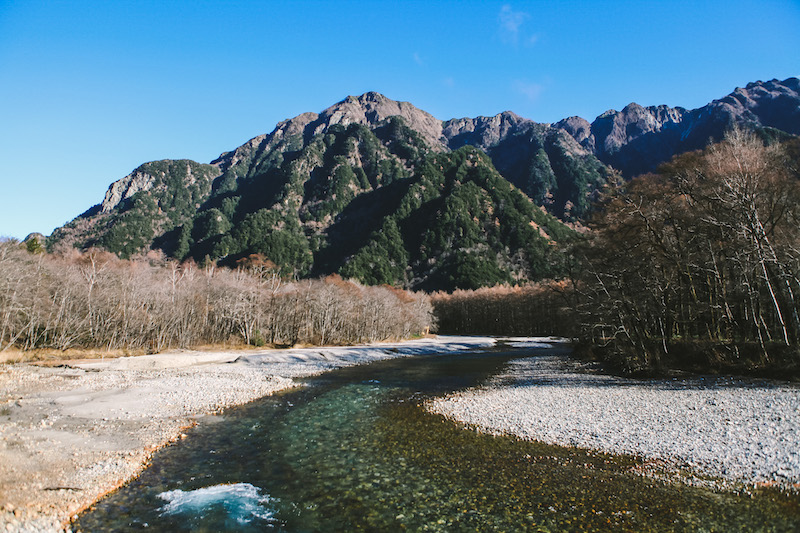
When coming by bus to Kamikochi Valley, Taisho Pond is one of the first thing you will see. The view from Taisho Pond is absolutely stunning and it will set the scene for the rest of your visit.
We recommend to stop at Taisho Pond and hike all the way to Kappa Bridge. This is one of the most popular and easy hike at Kamikochi. It takes about 1 hour.
Location: here
3. Next stop: Tashiro Marsh

If you decide to get off the bus at Taisho Pond, which we actually recommend, then your next stop after hiking a few minutes will be Tashiro Marsh.
Tashiro Marsh is another highlight during a trip to Kamikochi. The whole area is absolutely stunning with nature all around you.
By the way, the best time to admire the beauty of Kamikochi is during Autumn.
Location: here
4. Cross the Hotakabashi bridge

After Tashiro Marsh continue your walk along the river bank. At some point you will reach Hotakabashi bridge.
Cross the bridge and continue your exploration of Kamikochi on the other side of the river.
This bridge is not as scenic as Kappa Bridge, but it is still beautiful nevertheless. You can admire the blue and crystal water coming directly from the mountain.
Location of Hotakabashi bridge: here
5. Learn more about Walter Weston at the Memorial Plaque

The Kamikochi region occupied an important place in the Japanese logging industry until the middle of the 19th century.
However, in the years 1890 to 1910, the region was transformed after being discovered by the Reverend Walter Weston.
This British missionary contributed greatly to the promotion of mountaineering in Japan and to the preservation of the area against abusive exploitation.
Every year on the first Sunday in June, the Weston Festival bearing his name marks the opening of the mountaineering season.
You can check out his memorial plaque along the trail.
Location: here
6. Enjoy a meal or coffee around Kappa Bridge

After learning more about Walter Weston, you will arrive at Kappa Bridge. Around Kappa Bridge you will find a few hotels, restaurants, bakery and cafes. It’s a good time to take a break after your hike.
Make sure to try the apple pie at Trois Cinc Kamikochi.
Many will stop here and take the bus back to their hotels outside Kamikochi. However, you can continue further north as there is a lot more to see.
For the most adventurous, and if you start early enough, you can push the exploration a bit further.
7. Check out Myojin Pond

Continue up the Azusa River to reach Myojin Pond one of the best things to see in Kamikochi.
The path that goes upstream by the south bank, lasting 45 minutes, is nothing more than a simple walk in the forest; while the north side, which is a 70-minute walk, offers slightly more varied passages.
Both lead to the bridge and Myojin Pond. Located just behind the small Hotaka shrine. It is worth a look, although the entrance costs 300¥.
On October 8 of each year, a Shinto ceremony takes place on small boats to thank the gods for the protection they grant to the site.
There is also a small restaurant (location) offering grilled fish and buckwheat noodles as well as a small cafe and hotel.
8. Even deeper in the valley go to Tokusawa

The part even further upstream towards Tokusawa, about 60 minutes further, is a little less busy.
The river banks become more accessible and are conducive to a few charming stops in the heart of alpine nature.
If there are too many visitors, we recommend this trail rather than the southern part towards Taisho Pond.
Tokusawa is also a campground where you can sleep in a tent. More info here.
Location: here
8. Enjoy a few days trek in Kamikochi

The Kamikochi area is part of Chubu Sangaku National Park, also known as Japan’s Alps Nation Park. The area is dominated by the massive mountains of the Japanese Alps, the highest in Japan.
A playground for mountaineering and hiking fans, it is also a great reservoir for flora and fauna. It is possible to come across monkeys, wild boars and several types of birds. The massif is mainly formed by Mount Yakedake, a still active volcano rising over 2,455 m above sea level.
This place is listed among the top 100 mountains in the country.
Added to this are the Nishihotakadake (2,909 m), Okuhotakadake (3,190 m) and Maehotakadake (3,090 m) mountains.
There are different circuits according to the levels
Kamikochi offers several hiking trails. The circuits leading to the summits of the Alpine mountains are obviously more difficult to cross than those that join the rivers. The courses around the Azusa River are more suitable for beginners.
The circuits in the direction of the Alpine peaks are specially reserved for professionals. With unstable stones, steep slopes, and sometimes harsh conditions, only experienced hikers should venture in this part of Kamikochi.
Some trails last up to several days.
For more information on the various trails, check out this website.
How to get to Kamikochi?

To preserve the site from pollution, private cars cannot enter Kamikochi. The only option is to take a bus!
The final Kamikochi bus stop is near the Kappa Bridge.
Buses leave every hour between 7 am and 5 pm. The trip takes 1 hour from Takayama. From Matsumoto take the train to Shin-Shimashima first and then the bus.
The bus company for Kamikochi is called Alpico. Here is their website with all the necessary information. Reserve the seat in advance to avoid a bad surprise…
If you come by car, we recommend parking at Hirayu Onsen (location). From there you can take the bus from the bus terminal center located right next to the parking.
Klook.comThe best time to visit Kamikochi

Kamikochi is only accessible from April to November. For many, Autumn is by far the most beautiful season to visit Kamikochi.
Lucky us, as we visited this place in November! And yes, it was absolutely stunning, although we probably missed a bit of the peak time for the fall foliage.
Where to stay at Kamikochi?
Here you have 2 options.
Option 1: Stay directly inside the valley
Kamikochi deploys a wide tourist arsenal including hotels, inns, ryokan, souvenir shops, cabins, etc. These facilities are mostly located around the Kappa Bridge.
We recommend Kamikochi Lemeiesta Hotel:
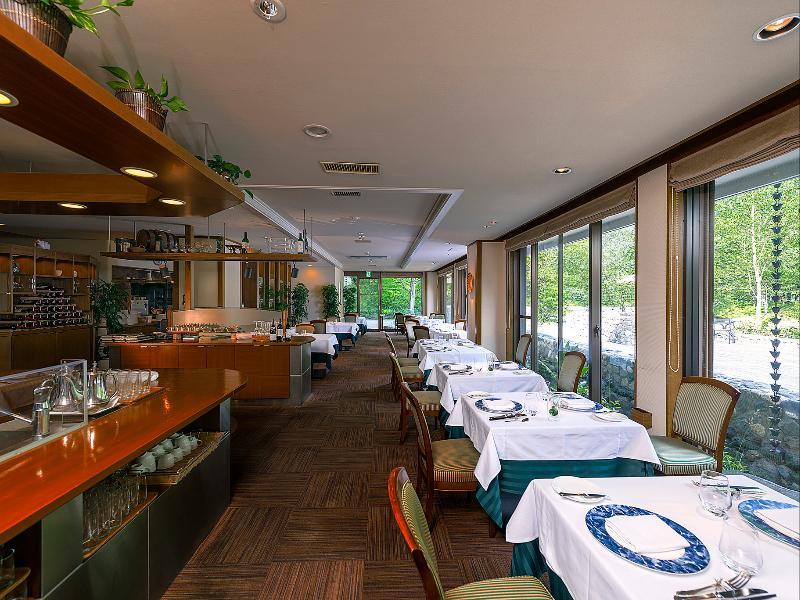
Right inside the valley near the Kappa Bridge, we recommend the beautiful Kamikochi Lemeiesta Hotel. Nestled in nature, it’s the perfect place to relax after a long day hiking through the valley. Here you can also enjoy onsen and delicious meals.
Hotels in Kamikochi are often full, so book as early as possible. See availability here.
Option 2: stay right outside Kamikochi at Hirayu Onsen
Hirayu Onsen Spa located right outside Kamikochi offers several onsen. Here you will have more options with hotels at better value for money. From Hirayu Onsen you can easily catch the bus to visit Kamikochi. Also if you come back car, you will have to park at Hirayu Onsen anyway.
We recommend the following hotels in Hirayu Onsen:
Mozumo (adult only)
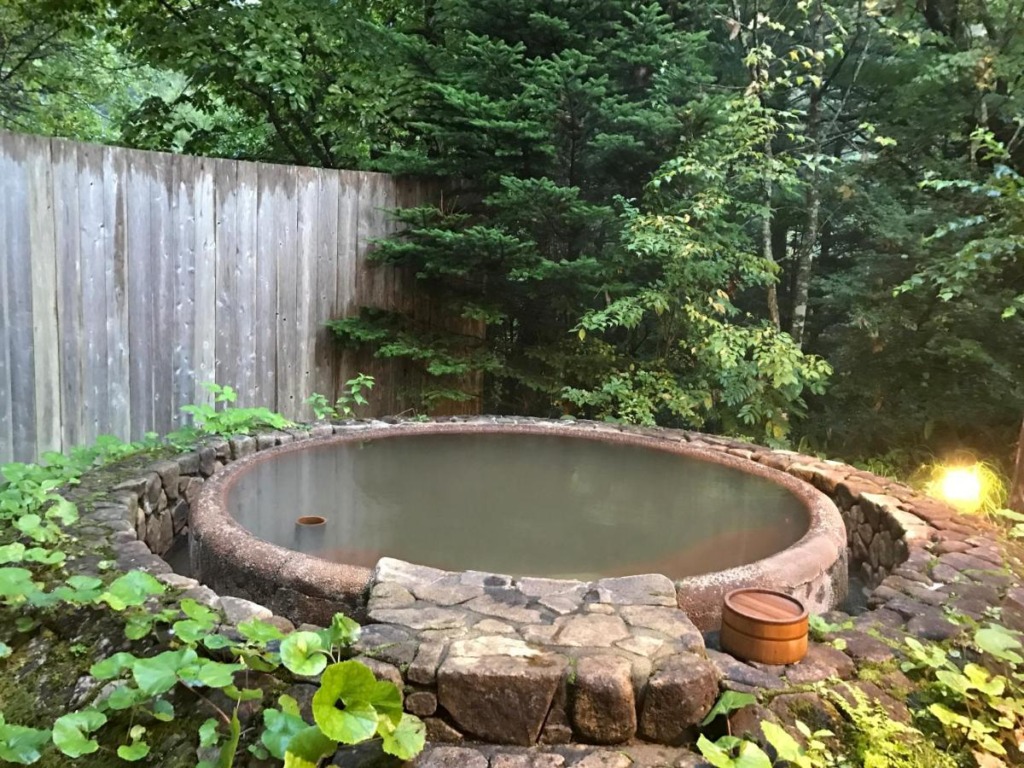
A beautiful and peaceful traditional Japanese hotel with great onsen in nature! Book here.
Miyama Ouan Kyoritsu Resort

Miyama Ouan Kyoritsu Resort is our favorite hotel in the area. The rooms are beautiful, the onsen stunning and the food generous and really good.
If this place is still available (as often full), we recommend booking Miyama Ouan Kyoritsu Resort – check it out here.
What else to see near Kamikochi?
1. TAKAYAMA

If you are visiting Shirakawa-go, chances are that you have also included Takayama in your itinerary! And you did right! Takayama is another great place to visit in Japan, located only 1 hour away from Shirakawa-go.
There are many things to see in Takayama such as the historical center of SANMACHI SUJI, TAKAYAMA JINYA Residence, or HIDA KOKUBUN-JI temple.
READ: 15 BEST THINGS TO SEE IN TAKAYAMA
2. SHIRAKAWA-GO

Shirakawa-go is one of the best things to see around Takayama. Not going there during a stay in Takayama would be a mistake.
Shirakawa-go, which means White River Village in Japanese, is 50 kilometers (45 minutes’ drive) northwest of the city.
Without a car, the Nouhi bus from JR Takayama station can get you there in just under an hour. You can also hire a private chauffeur here which could be a good option for a large group.
Listed as a UNESCO World Heritage Site (along with Gokayama), Shirakawa-go is a village located in the heart of the Shokawa Valley in the Japanese Alps.
It is known for its typical houses with thatched roofs.

The roofs of these houses are steeply sloped to withstand the heavy snowfalls that affect the region in winter. It can snow the equivalent of 10 meters of snow over a winter …
In the village, the traditional houses are surrounded by rice fields. The place is truly magnificent.
Strolling through the streets, alleys, and paths of the village of Shirakawa-go is a real pleasure!
Make sure to go to the Shiroyama viewpoint to enjoy a magnificent panorama of the village and the surrounding mountains (see photo above).
READ: FULL GUIDE FOR A VISIT OF SHIRAKAWA-GO
3. MATSUMOTO

Matsumoto is one of Japan’s prettiest cities. It is a charming place especially famous for its unique castle! But Matsumoto is also full of cute streets, nice galleries, delicious cafes and beautiful surrounding scenery. Indeed Matsumoto offers amazing views to the Japanese Alps.
Matsumoto Castle, one of the best things to see in Matsumoto, is Japan’s oldest wooden castle and one of four castles designated as National Treasures. The castle is often nicknamed the Crow’s Castle due to its black color.
READ: 10 BEST THINGS TO SEE IN MATSUMOTO
FINAL THOUGHTS – IS KAMIKOCHI WORTH A VISIT?
Our experience of Kamikochi was absolutely outstanding! We enjoyed our visit a LOT!
However, we heard that sometimes it can be overcrowded with tourists which is a pity… We were lucky not to experience that, as we were one of the first visitors after Japan reopened its borders post-COVID…
Please share your experience in the comment box below, so that fellow travelers can also read different experiences…
Related posts
- 15 BEST THINGS TO SEE IN TAKAYAMA
- BEST THINGS TO SEE IN THE JAPANESE ALPS
- WHAT TO SEE IN GERO ONSEN
- GUIDE FOR A VISIT TO NARAI-JUKU
- HIKE ALONG NAKASENDO [TRAVEL GUIDE]
- GUIDE TO TSUMAGO ALONG NAKASENDO
- 15 BEST THINGS TO SEE IN HAKONE NEAR MT. FUJI
- 15 INCREDIBLE THINGS TO SEE AT LAKE KAWAGUCHI
- OBUSE, A BEAUTIFUL TOWN IN JAPAN WORTH A VISIT
- 10 BEST THINGS TO SEE IN MATSUMOTO
- FULL GUIDE FOR VISITING HAKUBA IN JAPAN
- DISCOVER LAKE YAMANAKA NEAR MT. FUJI

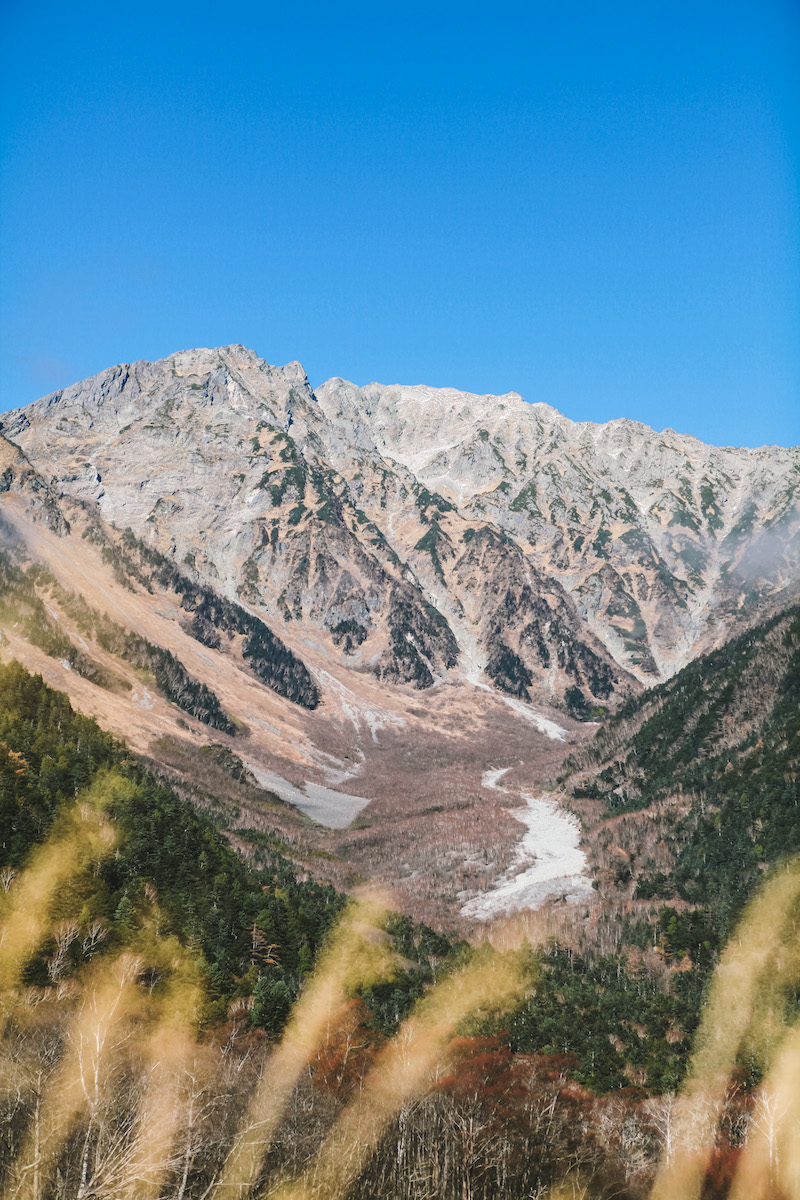


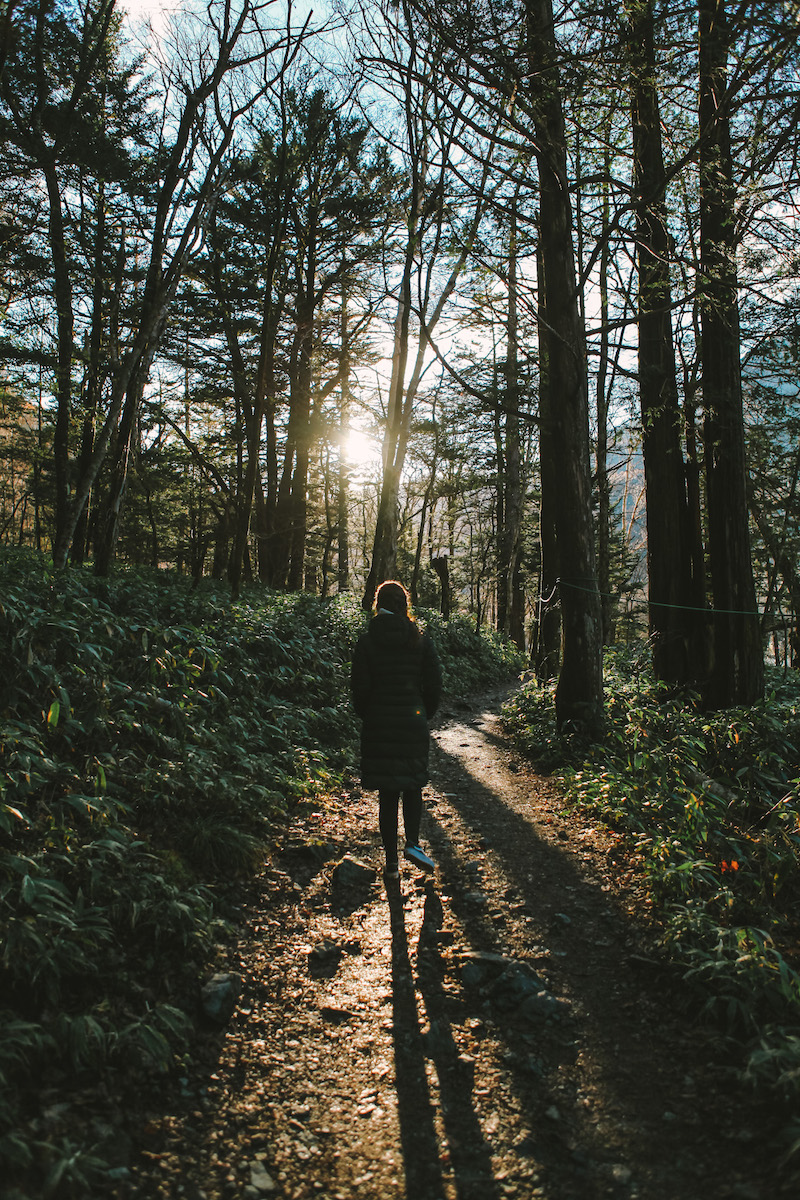

![GUIDE TO THE MARBLE MOUNTAINS IN DA NANG [VIETNAM]](https://afuncouple.com/wp-content/uploads/2022/10/Marble-Mountains-in-Da-Nang-in-Vietnam-6-768x512.jpg)
![18 BEAUTIFUL THINGS TO SEE IN NIKKO [JAPAN]](https://afuncouple.com/wp-content/uploads/2023/02/Best-things-to-see-in-Nikko-4-768x512.jpg)

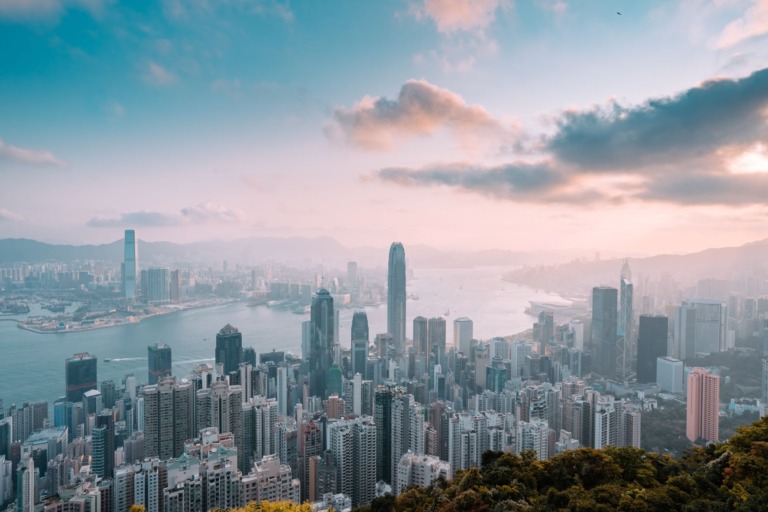
![HIKING LITTLE ADAM’S PEAK IN ELLA, [SRI LANKA]](https://afuncouple.com/wp-content/uploads/2022/09/Little-Adams-Peak-Hike3-768x512.jpg)